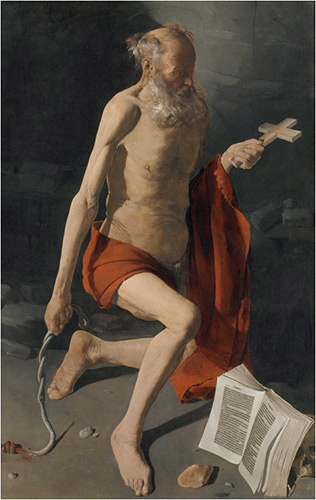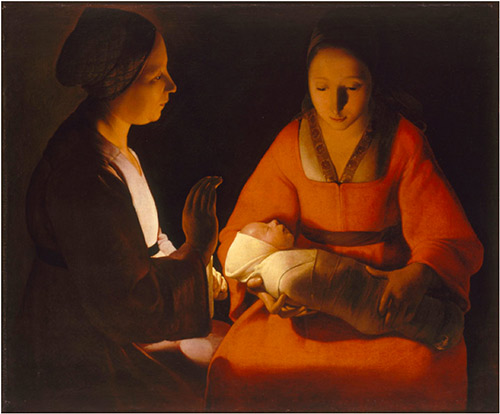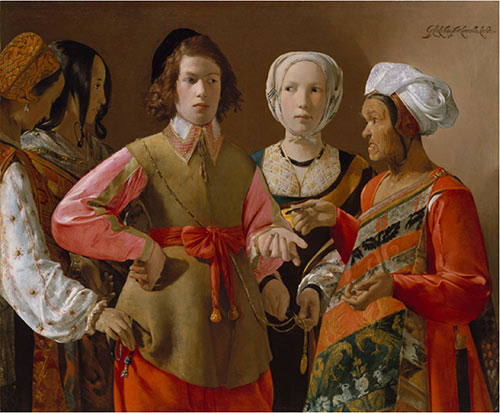His artistic personality only recently discovered, the masterful pictures by baroque painter Georges de La Tour (1593-1652) are currently on view during a comprehensive and monumental exhibition at the Prado.
The Museo del Prado in Madrid, Spain, has recently launched a monumental exhibition, organized into three tantalizing themes, dedicated to the life and career of baroque master Georges de La Tour (1593-1652). Although recognizing the debate surrounding a chronology of La Tour’s work, the museum has organized the show as the artist’s career progressed.

Georges de La Tour, “Penitent Saint Jerome,” oil on canvas, 157 x 100 cm. (c) Musee de Grenoble 2016
In “The Early Years,” La Tour’s religious figures and genre subjects — such as the mesmerizing “The Musicians’ Brawl” — are detailed. As the museum suggests, “it has always been considered that the most realist pictures are the earliest, which must have been produced at the end of the second decade of the 17th century.” Indeed, “The Musicians’ Brawl” draws more parallels to Michelangelo Caravaggio’s multi-figural compositions, brilliant color, and strong tenebrist light than La Tour’s later works.

Georges de La Tour, “The Newborn Child,” oil on canvas, 76 x 91 cm. (c) Musee des Beaux Arts 2016
Viewers encounter “Replicas and Series” next during the exhibition, highlighting La Tour’s developing palette and surface. The museum writes, “In the third decade of the 17th century La Tour’s technique evolved towards flatter, more watercolor-like brushstrokes resulting in more luminous paintings. At this date his originality and virtuosity reached their maximum expression in his daytime scenes. In addition, the physical types become less rough and the actions undertaken by the figures more serene and dignified.”

Georges de La Tour, “A Blind Hurdy-gurdy Player,” oil on canvas, 86 x 62 cm. (c) Museo Nacional del Prado 2016
The third theme, “The Final Years,” showcases the artist’s dramatic nocturnal religious paintings. The Prado reports that La Tour’s “celebrated, seemingly simple night scenes with their silent, moving atmosphere, include figures that magically emerge from rooms filled with silence, painted in an almost monochrome palette and with geometrical forms. The complete absence of haloes or other religious attributes and the humble figure types explain why some nocturnal episodes have been read in secular terms.”

Georges de La Tour, “The Fortune Teller,” oil on canvas, 102 x 123 cm. (c) Metropolitan Museum of Art 2016
The exhibition is without question a fantastic opportunity to experience one of the 17th century’s outstanding talents. Works from all across the globe have been loaned and borrowed by the Prado to compose the show, and their efforts have paid off in an exquisite display of baroque genius with the brush. In fact, the museum reminds viewers that “more than 40 paintings are more or less unanimously considered to be autograph works, while 28 canvases and prints are copies of lost originals. In other words, there are more than 70 known compositions, of which four are dated and only 18 signed.”
To learn more, visit the Museo del Prado.
This article was featured in Fine Art Today, a weekly e-newsletter from Fine Art Connoisseur magazine. To start receiving Fine Art Today for free, click here.








